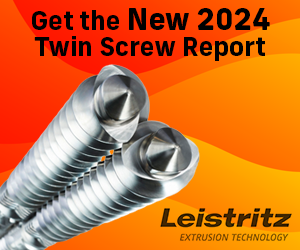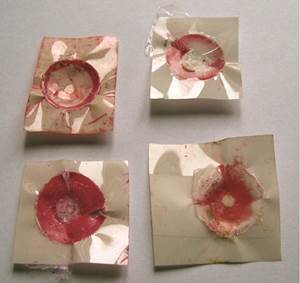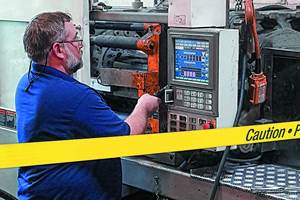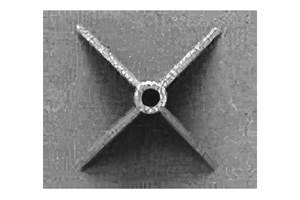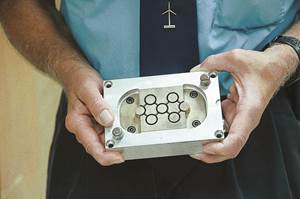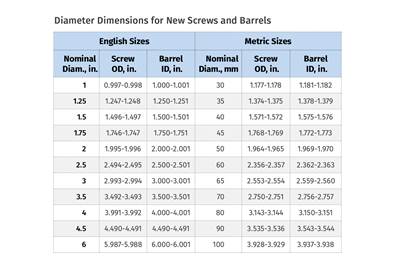What's Your Production Efficiency?
Follow these simple tips to develop reports that analyze plant efficiency in a more useful way--one that helps you quickly pinpoint production problems.
If your molding plant is like most, your managers have a monthly meeting to discuss how well it is achieving efficiency targets. They discuss data that have been gathered, post a graph on the bulletin board, and finally file the paper in a locked cabinet. If the results are better than last month, the team might get a free lunch. If the results are worse, everyone works overtime.
An efficiency measure should do more than just give you a pat on the back or a kick in the pants. It should help you improve your operations--and do so without requiring you to spend hours in front of a computer. The numbers should be both easy to understand and practical. A good efficiency measurement will help you figure out how much scrap you made, if you ran slower than standard cycle times, and how much downtime your machines experienced. If your efficiency measures cannot help you answer questions like these, then they are not helping you run your plant.
Let's start simply
When most molders talk about efficiency, they want to know how close they came to their "maximum production" potential. This is an expression of actual production as a percentage of the theoretical ideal production rate. Let's call this value Production Efficiency. Achieving 100% here means that every machine in your plant runs continuously all year at standard cycle times without a single scrap part.
Calculating Production Efficiency should be a straightforward ratio: Good Parts Made vs. Good Parts Possible. Good Parts Made is easy to determine by counting boxes of parts, but Good Parts Possible is a little trickier. Generally, molders accept Good Parts Possible as the product of available machine time, standard cycle time, and total cavities. While it is possible to calculate Production Efficiency this way, the value does not tell us much about why we were not 100% efficient.
Components of efficiency
What if we could break Production Efficiency into two parts? One part could tell us how much we ran the machine and the other how well it ran.
Think of molding for a minute as if it were a road race. If we are selecting runners for a long race, knowing how fast someone runs is not enough. We might be tempted to pick fast sprinters for our marathon team even though we really need slower endurance runners. To get a balanced view, we need to know the length of the race as well as the runners' speed.
This principle applies to injection molding: Production Efficiency can be split into how much and how well a machine ran. Let's call the former factor Machine Efficiency because it tells us how much the machine was in use. We'll call the latter factor Mold Efficiency, which tells us how well the molding process ran.
Machine Efficiency is simple calculation. It is the machine's run time versus available time. So, a machine that was down two hours of an eight-hour shift has a 75% Machine Efficiency. Because Machine Efficiency is easy to calculate and understand, many molders already track it as a critical performance measure.
Mold Efficiency is more abstract. It tells us how the molding machine performed during that run time--or where we could have made good parts but did not. The problem with Mold Efficiency is that there are several factors that determine how well you ran a machine--including scrap, cycle time, and cavitation. All three factors interact to determine a machine's efficiency.
For example, let's assume we have a 10-cavity tool that is under-performing. In order to run all 10 cavities, we need to lengthen our cycle time by 10%. However, if we were to close off a cavity, then the tool could run nine cavities at standard cycle time. In either case, we only have 90% efficiency. In practice, the interactions between scrap, cycle time, and cavitation often achieve a balance.
Working with the idea that Mold Efficiency can be expressed as a combination of scrap, cycle time, and cavitation, we can define easy-to-use measures for all three factors to arrive at a working definition for Mold Efficiency.
Shot Efficiency is our window into scrap rates and is easy to measure. It is the number of good parts versus the number of total parts made (good parts plus scrap). This value tells us what percentage of all the parts we made were good parts.
Cycle Efficiency is also easy to measure. It is the ratio of standard cycle time over the average cycle time. We need to be sure to express the ratio this way and not the reverse, so that faster cycles yield higher values. For example: if we run a tool with a 10-sec standard cycle at 9.5-sec, the Cycle Efficiency should be 105%, not 95%.
Cavity Efficiency is trivially easy to measure. It is the number of cavities that were run against the number of cavities that the tool was designed to run. Cavity Efficiency is sometimes overlooked as a major factor in overall efficiency. However, I have seen cases where tool cavitation varied depending on material, machine, frequency of preventive maintenance, and even relative humidity.
How to use the data
Now that we have broken overall Production Efficiency into its components, we can use this multi-level approach to help us find and solve problems. First, we can quickly spot the existence of problems using the overall Production Efficiency value. Then, we can immediately determine the cause of any poor performance by examining the efficiency components. This method works because the product of the components is mathematically equal to our original method for determining Production Efficiency.
Let's look at some sample numbers. To illustrate the point, all the Production Efficiencies for the jobs in the example are 75%, yet each tells a different story. The example indicates that even though bottom-line performance was identical, what caused that bottom line varied greatly.
Put yourself in the shoes of the plant manager for our sample six-machine plant. All her machines are running at 75%, but she can only work on two or three of the machines during this shift. If she only had a catch-all Production Efficiency number to work from, she could spend hours just figuring out what is wrong with machine #1. Using our multi-level efficiency values, she can pinpoint the problems on all the machines in seconds: She sets her maintenance team to improve the uptime on machine #1, sends the tool on machine #2 out for preventive maintenance, gets engineering to look at machine #3, and calls a meeting with the operators on machines #5 and #6.
Now that you've got the basics of the approach, give it a try with your own data. You may visit my web site (www.h-consulting.com). There I have compiled an Excel spreadsheet with the formulas for you to download.
These equations won't make your efficiency problems go away, but they will help you find problems faster so you can solve them faster. I call that improved efficiency.
Rob Hirschfeld, president of Hirschfeld Consulting in Metairie, La., integrates manufacturing and business software. He also provides custom web applications and consults on ERP systems and other business software. (Tel. 504-780-7971)
Related Content
Are Your Sprue or Parts Sticking? Here Are Some Solutions
When a sprue or part sticks, the result of trying to unstick it is often more scratches or undercuts, making the problem worse and the fix more costly. Here’s how to set up a proper procedure for this sticky wicket.
Read MoreHow to Mount an Injection Mold
Five industry pros with more than 200 years of combined molding experience provide step-by-step best practices on mounting a mold in a horizontal injection molding machine.
Read MoreHow to Reduce Sinks in Injection Molding
Modifications to the common core pin can be a simple solution, but don’t expect all resins to behave the same. Gas assist is also worth a try.
Read MoreHow to Select the Right Tool Steel for Mold Cavities
With cavity steel or alloy selection there are many variables that can dictate the best option.
Read MoreRead Next
Lead the Conversation, Change the Conversation
Coverage of single-use plastics can be both misleading and demoralizing. Here are 10 tips for changing the perception of the plastics industry at your company and in your community.
Read MoreHow Polymer Melts in Single-Screw Extruders
Understanding how polymer melts in a single-screw extruder could help you optimize your screw design to eliminate defect-causing solid polymer fragments.
Read MoreTroubleshooting Screw and Barrel Wear in Extrusion
Extruder screws and barrels will wear over time. If you are seeing a reduction in specific rate and higher discharge temperatures, wear is the likely culprit.
Read More


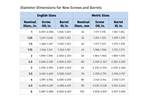
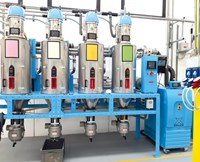

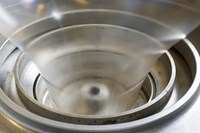













.png;maxWidth=300;quality=90)
